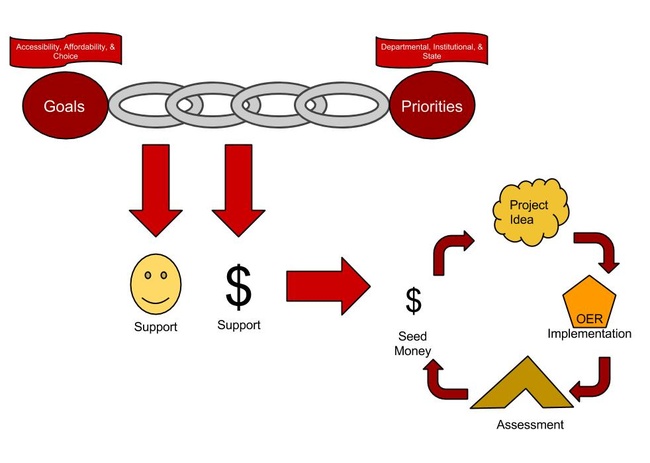OER FLC Sample
OERs and Their Use at Miami University
Goals
Overall, OERs should increase:
- Accessibility
- Affordability
- Choice
Studies at other institutions link OER accessibility and affordability, particularly in the first two years, to academic success, retention, grades, affordability, and ability to persist. Educators' choice increases through OER adoption as they are able to find and create resources that fit their disciplines and courses, unrestricted by a textbook-only approach.
Goals and Priorities
Successful schools link these goals to existing priorities within their organizations (e.g. departmental missions, institutional strategic plans, state-wide political agendas).
Linking these goals to priorities results in both philosophical buy-in and financial buy-in (monetary backing).
Philosophical and financial support lets schools fund projects that reward educators for creating OERs.
Assessment
Educators, students, and their institutions then assess the success of these OERs, assuring that all parties benefit. Data provided to organizational leadership may result in further buy-in and financial backing, feeding the cycle.
Where Can Miami Begin?
- Goals and Priorities: Link to strategic planning, Miami 20/20 Plan, I Am Miami, Provost initiatives, Board of Trustees initiatives
- Assessment: Data from other schools (e.g. PowerPoints from Affordable Learning Georgia initiative); Data from OLNet Evidence Hub for OERs
- Pilots modeled after other schools' choices to target large, underclass courses; collect data and assess
- Provide a road map: OER Commons; Open Education Quality Initiative
What Does This Look Like?
